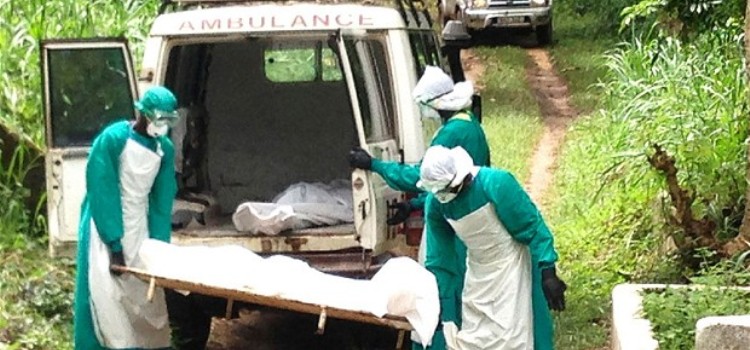Background:
Cholelithiasis involves the presence of gallstones, which are concretions that form in the biliary tract, usually in the gallbladder. Choledocholithiasis refers to the presence of 1 or more gallstones in the common bile duct (CBD). Treatment of gallstones depends on the stage of disease.
Signs and Symptoms:
Gallstone disease may be thought of as having the following 4 stages:
- Lithogenic state, in which conditions favor gallstone formation
- Asymptomatic gallstones
- Symptomatic gallstones, characterized by episodes of biliary colic
- Complicated cholelithiasis
Symptoms and complications result from effects occurring within the gallbladder or from stones that escape the gallbladder to lodge in the CBD.
Characteristics of Biliary Colic Include the Following:
- Sporadic and unpredictable episodes
- Pain that is localized to the epigastrium or right upper quadrant, sometimes radiating to the right scapular tip
- Pain that begins postprandially, is often described as intense and dull, typically lasts 1-5 hours, increases steadily over 10-20 minutes, and then gradually wanes
- Pain that is constant; not relieved by emesis, antacids, defecation, flatus, or positional changes; and sometimes accompanied by diaphoresis, nausea, and vomiting
- Nonspecific symptoms (eg, indigestion, dyspepsia, belching, or bloating)
Patients with the lithogenic state or asymptomatic gallstones have no abnormal findings on physical examination.
Distinguishing uncomplicated biliary colic from acute cholecystitis or other complications is important.
Key Findings That May Be Noted Include the Following:
- Uncomplicated biliary colic – Pain that is poorly localized and visceral; an essentially benign abdominal examination without rebound or guarding; absence of fever
- Acute cholecystitis – Well-localized pain in the right upper quadrant, usually with rebound and guarding; positive Murphy sign (nonspecific); frequent presence of fever; absence of peritoneal signs; frequent presence of tachycardia and diaphoresis; in severe cases, absent or hypoactive bowel sounds
The presence of fever, persistent tachycardia, hypotension, or jaundice necessitates a search for complications, which may include the following:
- Cholecystitis
- Cholangitis
- Pancreatitis
- Other systemic causes
Diagnosis:
Patients with uncomplicated cholelithiasis or simple biliary colic typically have normal laboratory test results; laboratory studies are generally not necessary unless complications are suspected. Blood tests, when indicated, may include the following:
- Complete blood count (CBC) with differential
- Liver function panel
- Amylase
- Lipase
Imaging modalities that may be useful include the following:
- Abdominal radiography (upright and supine) – Used primarily to exclude other causes of abdominal pain (eg, intestinal obstruction)
- Ultrasonography – The procedure of choice in suspected gallbladder or biliary disease
- Endoscopic ultrasonography (EUS) – An accurate and relatively noninvasive means of identifying stones in the distal CBD
- Laparoscopic ultrasonography – Promising as a potential method for bile duct imaging during laparoscopic cholecystectomy
- Computed tomography (CT) – More expensive and less sensitive than ultrasonography for detecting gallbladder stones, but superior for demonstrating stones in the distal CBD
- Magnetic resonance imaging (MRI) with magnetic resonance cholangiopancreatography (MRCP) – Usually reserved for cases in which choledocholithiasis is suspected
- Scintigraphy – Highly accurate for the diagnosis of cystic duct obstruction
- Endoscopic retrograde cholangiopancreatography (ERCP)
- Percutaneous transhepatic cholangiography (PTC)
Related posts:
 Ebola Virus Disease
Ebola Virus Disease
 Are Smartphones Changing The Shape of Our Brains?
Are Smartphones Changing The Shape of Our Brains?
 Home Made Remedies for Asthma
Home Made Remedies for Asthma
 Strategies to Prevent Heart Disease
Strategies to Prevent Heart Disease
 Diabetes Care: 10 Ways to Avoid Diabetes Complications
Diabetes Care: 10 Ways to Avoid Diabetes Complications
 Natural Antibiotics Alternatives You Should Know
Natural Antibiotics Alternatives You Should Know
 Top 10 Health Benefits of Eating Chicken
Top 10 Health Benefits of Eating Chicken
 Nutritions for Kids: Guidelines for A Healthy Diet
Nutritions for Kids: Guidelines for A Healthy Diet
 وزن گھٹانے کی آسان ترکیبیں
وزن گھٹانے کی آسان ترکیبیں
 No Equipment, No Time? How to Get in a Great Workout
No Equipment, No Time? How to Get in a Great Workout
 Healthy Ramadan Meal Plan
Healthy Ramadan Meal Plan
 5 Vitamins That’s Essential For All Age Women
5 Vitamins That’s Essential For All Age Women







Great post! We will be linking too this particularly great article on our site.
Keep up the great writing.